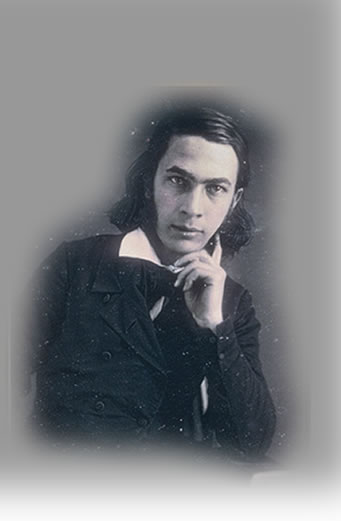
[C] Our Talisman
The “Our Talisman” sketches were Lippard’s first venture into a more highly organized serial form of publication; they exhibited a basic narrative continuity that was absent from the naturally episodic character of the “City Crimes” reports. Flib, the “sanguine haired youth” (C1) possessed of an odd vernacular and apparently Irish accent, reported that one night as he was dozing in the newsroom, a spirit with two horns and a curly tail appeared suddenly and gave him a magic ring (the “talisman”). The ring’s supernatural powers included the ability to render the wearer invisible (so that he could venture unseen into places where he would otherwise not be admitted) and also the ability to see into other people’s minds and discern their true motives for their dubious actions. With these extraordinary powers Flib set about to gather information for the newspaper, and help expose the “festering corruption” (C4) that plagued many of the city’s institutions. He penetrated a theatre’s box office (C1), where the manager regularly cheated his employees; the (male) musicians, carpenters and machinists revolted against this exploitation, threatened to quit, and thus secured their due. But when some (female) actresses asked for the money that was owed them, the cheating manager dismissed them cruelly. Then Flib visited a courtroom invisibly (C2), where he saw a mulatto petty thief ridiculed and given harsh punishment, whereas (Flib contended) financial manipulation and abuse on a large scale by bankers was tolerated. The cronyism and dishonesty of bank directors was directly observed by Flib in several installments (C4-6, 8). A long sketch (C4) showed systemic fraud in the post office: employees skimming funds to compensate for the postmaster’s miserliness, while the postmaster contrived to make a scapegoat of a blameless clerk and thereby create the impression, with his superiors in Washington, that he was cracking down on corruption. One short sketch (C7) was merely comic: two egotistical actors disputed about the accusation of thievery that one had made against the other. Finally, “Roguery in a Dry Good Store” (C9) illustrated the trickle-down effect at the retail level of the financial crisis that had been dramatized from the point of view of the banking system in several earlier installments. Read More ...
All of the “Our Talisman” sketches rehearsed a literary device that Lippard used repeatedly thereafter during his writing career: they revealed the truth behind respectable appearances, opened up secret social spaces to inspection, exposed the truth of dire moral corruption and rampant economic domination. In The Quaker City he brought this trope of radical uncovering to full expression, purporting “to lay bare vice in high places, and strip gilded crimes of their tinsel,” to “lift the cover from the Whited Sepulchre” that was respectable Philadelphia society, “to show the festering corruption that rankles in its depths” (all phrases from the prefatory “Origin and Object of this Book”).